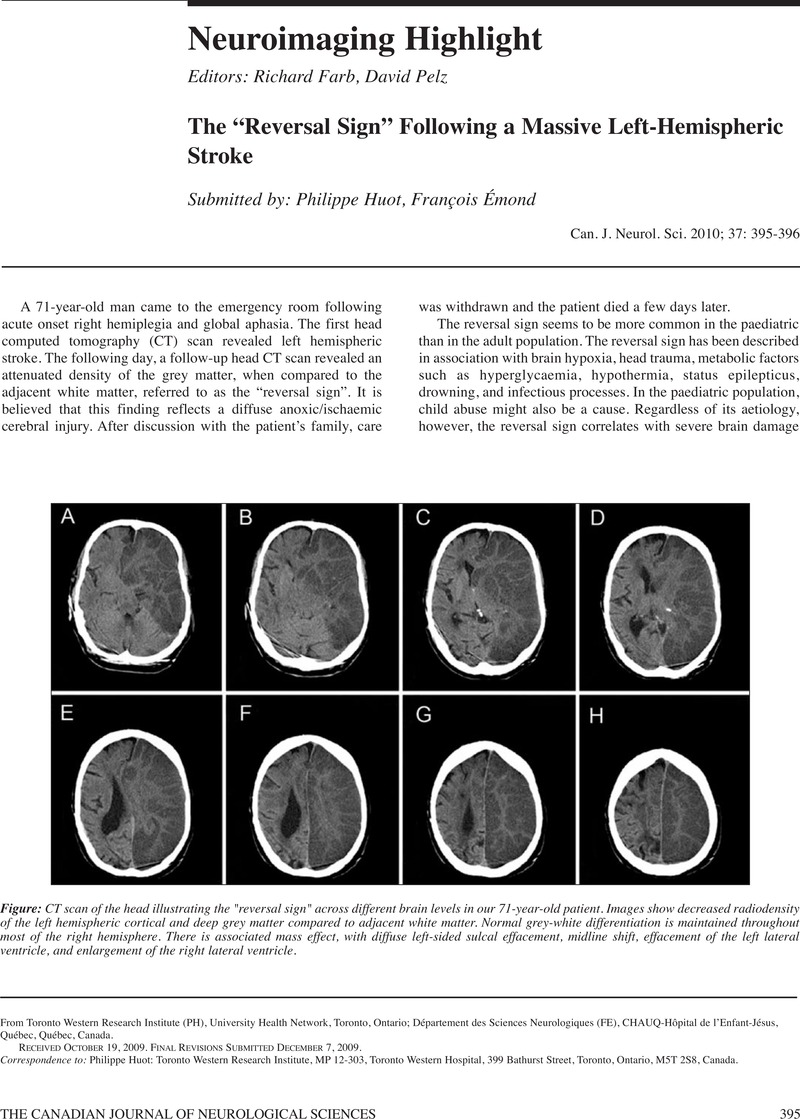No CrossRef data available.
Article contents
The “Reversal Sign” Following a Massive Left-Hemispheric Stroke
Published online by Cambridge University Press: 02 December 2014
Abstract
An abstract is not available for this content so a preview has been provided. As you have access to this content, a full PDF is available via the ‘Save PDF’ action button.

- Type
- Neuroimaging Highlight
- Information
- Copyright
- Copyright © The Canadian Journal of Neurological 2010
References
1.
Vergote, G, Vandeperre, H, De Man, R.
The reversal sign. Neuroradiology. 1992;34(3):215–6.Google Scholar
3.
Han, BK, Towbin, RB, De Courten-Myers, G, Ball, WS Jr. Reversal sign on CT: effect of anoxic-ischemic cerebral injury in children. AJNR Am J Neuroradiol. 1989;10(6):1191–8.Google Scholar
4.
Bird, CR, Drayer, BP, Gilles, FH.
Pathophysiology of “reverse” edema in global cerebral ischemia. AJNR Am J Neuroradiol. 1989;10(1):95–8.Google Scholar




